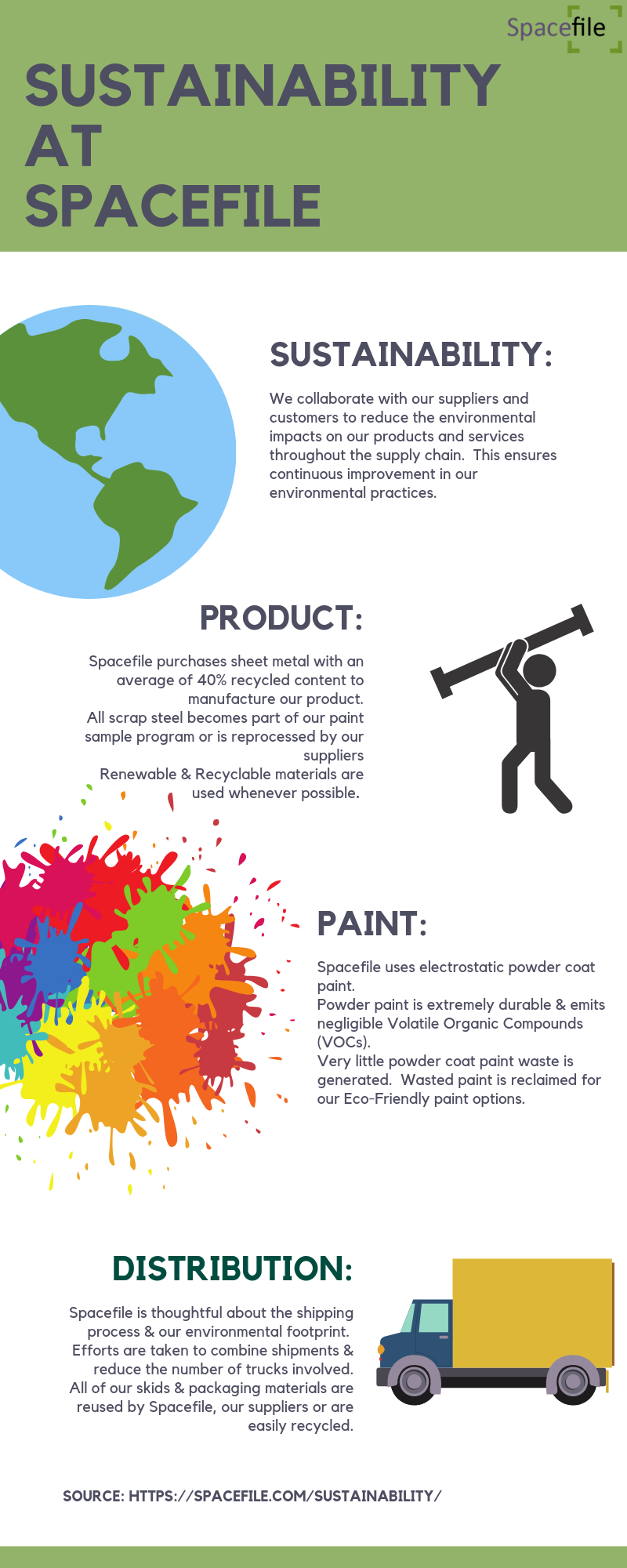
Resimercial office design is a movement!
Resimercial is a layout and furnishing style the brings the homey feel of residential furniture into the workplace. This particular style has been growing in popularity over the last several years but has recently gone from being a ‘trend’ to a true design movement. The ‘goal’ of resimercial environments is to make the workspace a welcoming, comfortable place to spend time, which is something that employees (from millennials to Baby Boomers to Generation X) are looking for in offices. Studies have shown that investing in resimercial design increases employee retention, productivity, and creativity and powerhouse companies like Microsoft, Google, and Uber are reaping the benefits. The premise is that comfortable employees are happier and better employees.
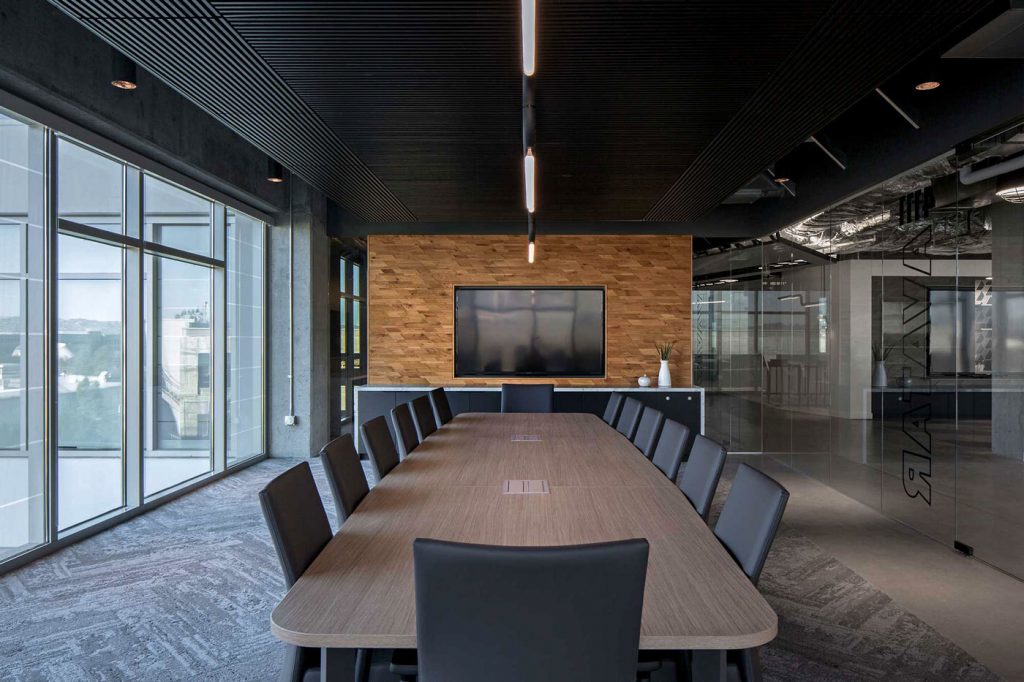
Elements of ‘good’ Resimercial design
Natural Lighting- Resimercial lighting favors the more varied, warmer lighting found in homes. Natural light is also present.
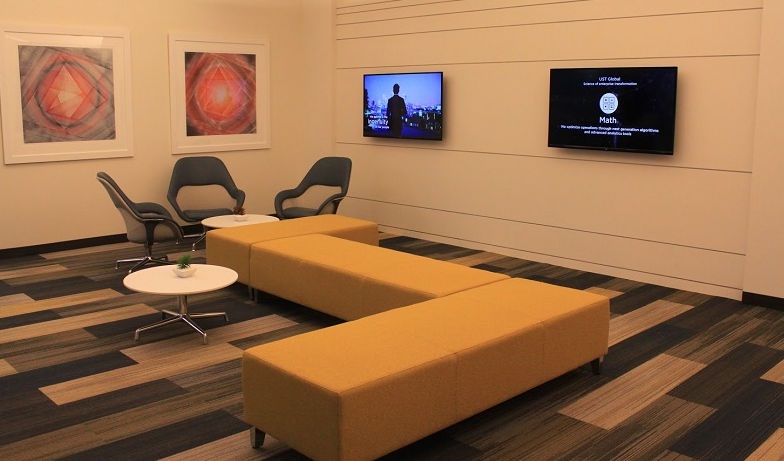
Technological upgrades that improve the efficiency of space make for a more comfortable environment.
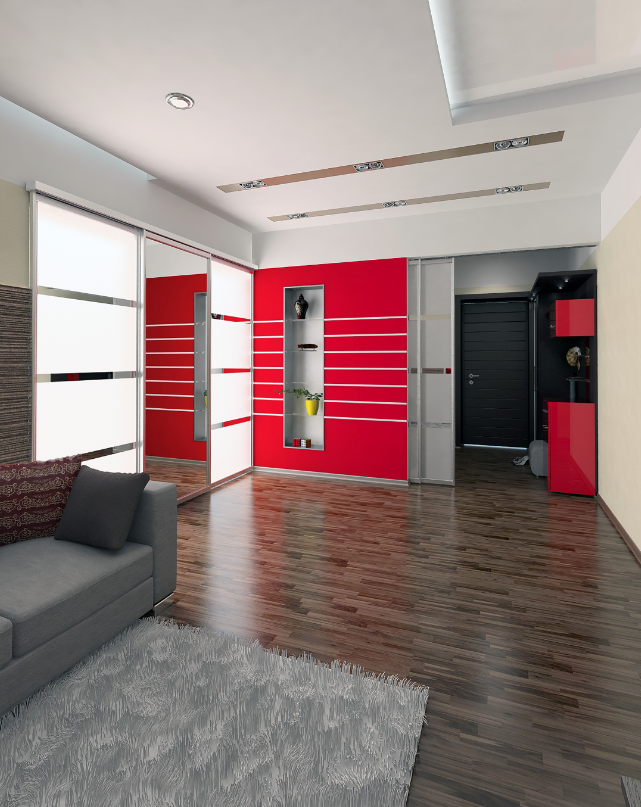
Function-specific layout -just like home, areas are designed to be comfortable, inviting, functional and with a purpose. High-Density storage lends itself beautifully to Resimercial design because of its efficiency and ability to blend seamlessly with any type of office ‘vibe’
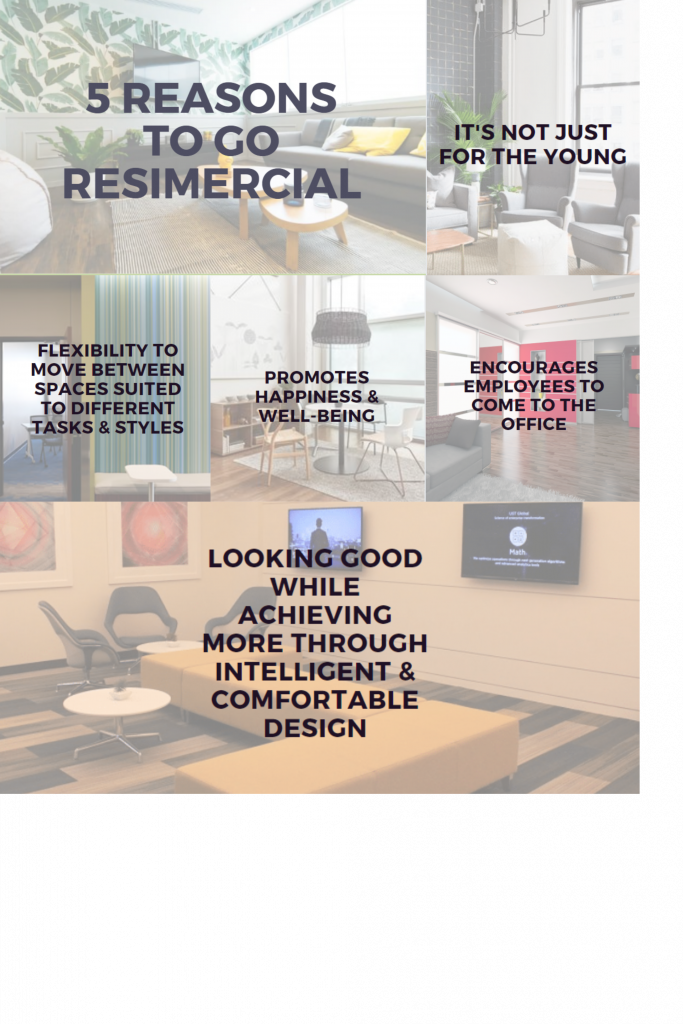
Resimercial design encourages the ‘whole employee’ presence in the work environment. As the lines between living and working are continuously blurred, employees are attracted to work environments that feel less like 9 to 5 institutional factories and more like a home away from home.
Interested in learning how high-density storage integrates seamlessly with Resimercial office design? Contact us today for more information !
High-Density mobile storage- Why we love it
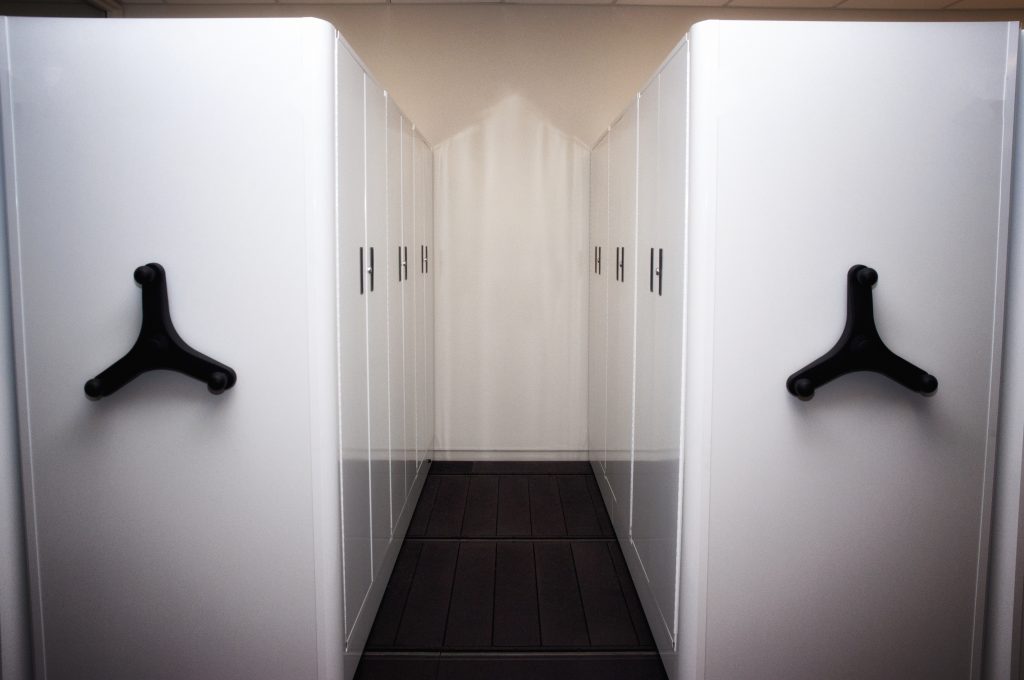
In many of today’s work environments, chances are floor space is at a premium. There are hard copies of important documents, samples, stock, and various miscellaneous items, but space in storage areas and shelves is already over-flowing. What’s the answer? Move to a bigger space? Store documents offsite and incur monthly fees?
When storage space is non-existent, things can become cluttered and stressful. Even though businesses are moving to reduced paper or paperless operations, there are still many hard-copy documents that still require a space. And what about those supplier samples, company uniforms, retail inventory, or office supplies? Those product brochures and paint or laminate samples are arriving on a regular basis. Where do you put them?
The answer is High-Density mobile storage, and yes, it should matter to you!
What is High-Density Mobile Storage?
This type of solution makes the most of the space available, while incurring a minimal storage footprint and being capable of storing a large volume of goods or documents without moving to a larger space or purchasing an offsite storage unit.
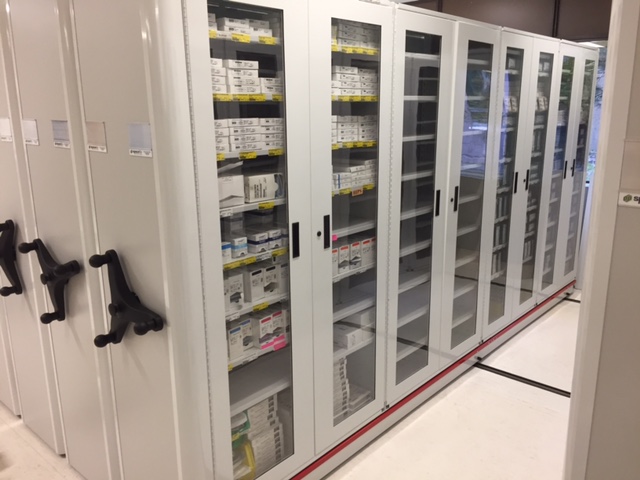
More than likely, you have already seen this storage in the past without realizing it. It is available in a variety of shapes and sizes. One of the industries in which high-density storage is more commonly seen, is in healthcare (specifically a doctor’s office or a healthcare facility), where patient files need to be maintained and securely stored or pharmaceutical supplies stored. Solutions for the healthcare industry often include large filing shelves that can roll along a track, allowing staff to access files they need and compressing walkways between rows they don’t need, using a fraction of the space a ‘regular’ or ‘traditional’ filing system would require.
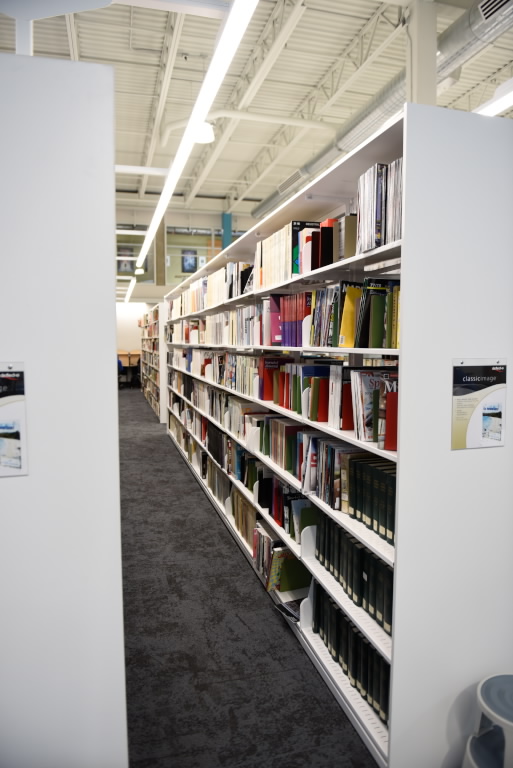
Libraries and retail organizations rely on this type of storage, especially when it comes to shelving. High-Density shelving allows for maximum storage capacity and easy access of a variety of different items. From apparel to books to housewares, high-density can store it more efficiently than traditional shelving can.
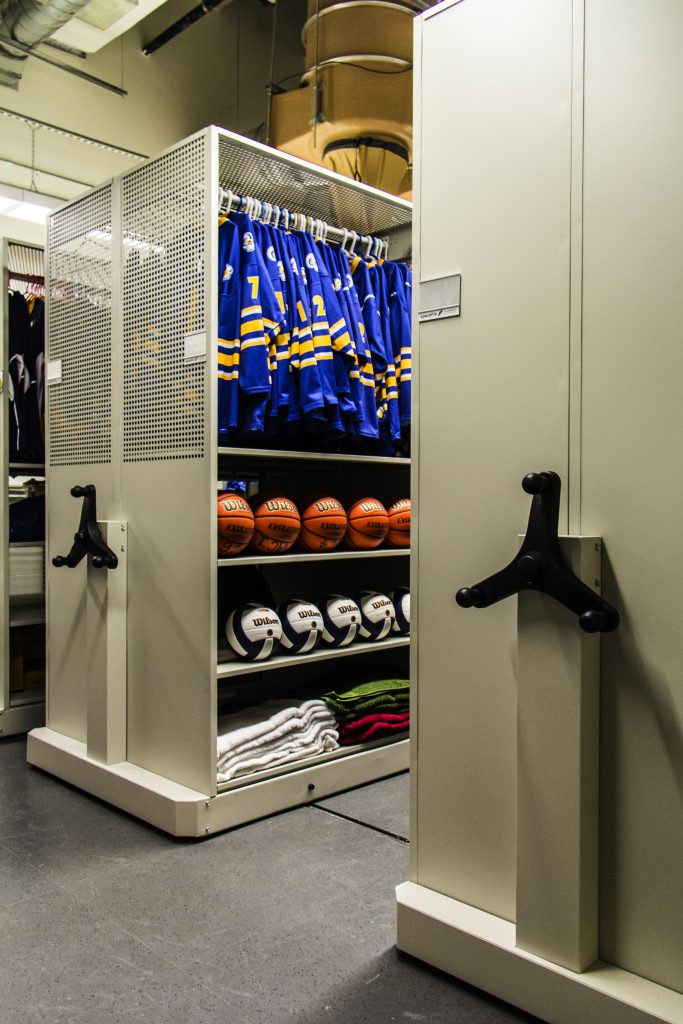
Another industry in which High-Density mobile storage systems are often seen is Athletics. Sports teams and recreation centers use this type of storage to help free up space within locker rooms. In certain cases, units will be customized with perforated shelves for air-flow (where clothing is being stored) as well as adjustable shelving to store ‘unique’ items like helmets or golf clubs.
High-Density Mobile Storage saves time
There is much research to suggest that employees spend a considerable amount of time searching for information. This is a drain on time and productivity that could be resolved with improving storage and filing practices. Imagine even 10 to 15 percent more productivity per employee. What if documents needed were a few steps away, organized within a High-density mobile storage unit?
High-Density Mobile Storage saves money
Offsite storage (as mentioned earlier) is costly, time-consuming, and inconvenient. Professional, secured document storage is even more costly-thousands of dollars per year.
High-Density mobile storage frees up floor space, giving greater flexibility to businesses. This space can be used for new staff as an organization expands, developed into a collaboration space, or turned into a client lounge. The possibilities are endless-and your business won’t have to move into a larger, more expensive location.
High-Density mobile storage is a one-time, up-front cost. While the initial purchase and installation of the unit may seem expensive, the recurring monthly cost reductions quickly make the investment worthwhile.
Simplify and Improve Storage
High-Density mobile storage is a solution for businesses who are ‘space-compromised.’ It is cost-effective and streamlined.
If you are wondering if High-Density mobile storage is the right solution for your business, contact Spacefile today for a free storage efficiency analysis. A member of our design team is happy to help walk you through our custom space solutions.
10 tips to maximize your retail back of house storage space
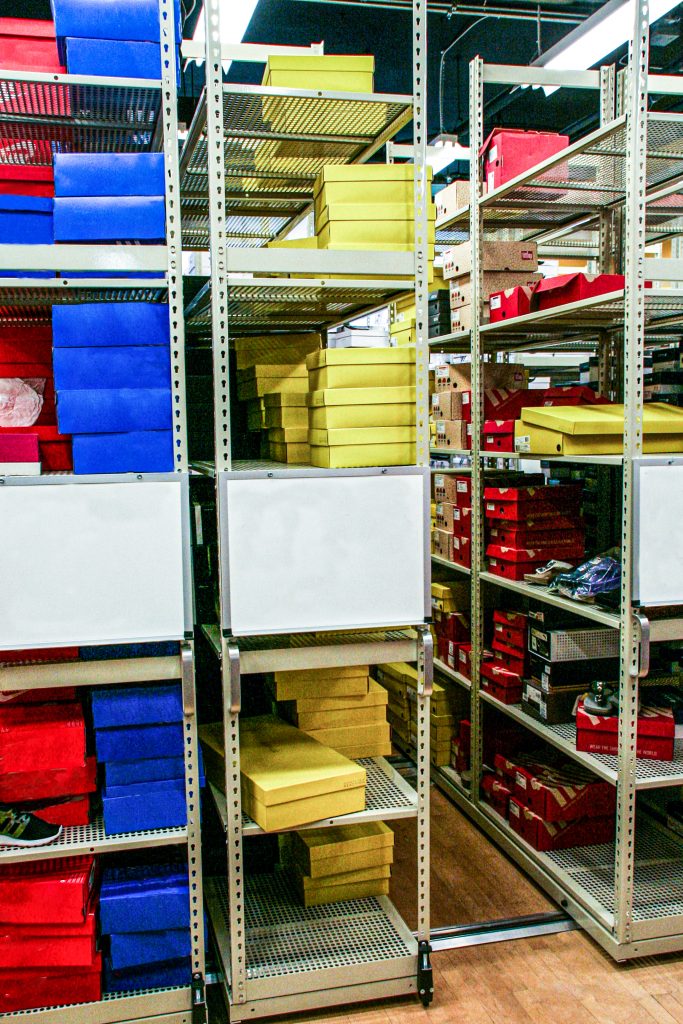
10 tips to Improve/Maximize your Retail Backroom Storage Space
1. Use the Right Storage Units
This seems obvious, but with so many storage options, and storage units available, it is worth looking into whether there is a more appropriate, dedicated option for your inventory. Spacefile offers a full retail product lineup of High-density shelving and High-density Mobile systems, which can be customized for your exact storage space. Back of house storage space often seems full beyond capacity; A mobile shelving system can dramatically increase capacity, improving efficiency and restoring order.
2. Make the Most of Vertical Space
As stated earlier, the back of house storage area is commonly overflowing, making operations inefficient. It makes sense to maximize storage space vertically. Making sure your shelving units are the right height can make the difference between a neat, orderly space and a dangerous one. Spacefile International Specializes in High Density Retail Shelving and Shelving Systems and has the ability to increase your storage space four-fold.
3. Discount or Discard Old Items
A simple but often overlooked option is to simply remove ‘old’ or ‘obsolete’ stock. While tempting to hold on to old inventory, it could be doing more harm than good. Stock that doesn’t sell and sits idle on a shelf, is an investment that could be put to better use. The easiest way to get rid of ‘old’ stock is to discount it but if that isn’t possible, alternatives can include donating to charity or having a giveaway.
4. Use Detailed Labels
Organization in the back of house storage area is critical to efficient day to day operations. Labelling sections is a great start, but have you considered labelling each shelving level, or used indicators (like arrows) to clearly mark the location? New staff will benefit from clear signage. There is a wide range of signage and labelling available, such as printed labels or magnetic strips.
5. Add a Note Taking Area
Back of house storage area tasks are commonly carried out in a hurry, and there is often no time to communicate observations or issues. One useful addition to any back of house storage area is a place where staff can quickly and easily make notes. A simple solution is to place a whiteboard on your storage or shelving system where staff can quickly and easily make notes. Spacefile offers a range of Accessories that are easily installed on any of their storage solutions.
6. Install Employee Lockers
In a retail environment, there is little to no privacy amongst staff. Adding lockers not only provides a practical way to store personal belongings at work and reduce the likelihood of lost or stolen items, it also offers the staff their own ‘private’ space away from the hustle & bustle.
7. Control the Temperature
Back of house storage areas can be very unpleasant to work in if there are no temperature controls in place, especially when located in windowless areas. Research suggests that small changes in temperature can have significant negative effects on human performance-especially a higher temperature. Cost effective ways to improve temperature in the back of house storage area include purchasing a fan or opening a window (if possible).
8. Cycle Count Your Inventory
Retailers check the accuracy of inventory with a full physical inventory annually. This typically requires a complete shutdown of operations and (in some instances), temporary or after-hours staff to complete the count, which can be costly and time-consuming. Cycle counting allows businesses to count a number of items in a number of areas without having to count the entire inventory. This reduces costs, and can also improve the accuracy of records, depending on frequency. Further to this, cycle counting requires a well-organized back of house storage areas (which is a benefit of High-density Storage).
9. Find the Best KPI’s for Your Business
Getting the most out of the back of house storage area depends on the right metrics. Businesses must be in touch with how well the back of house storage area is performing. KPI’s that are important to retailers include days of supply, inventory turnover, stock to sales ration, sell through percentage and gross margin return on investment. A true understanding of your inventory metrics combined with accurate cycle counts will greatly improve your back of house storage area by allowing for effective inventory management. The area won’t be overflowing, and staff will spend less time looking for merchandise.
10. Aesthetics in the back of house
Back of house storage areas often feel unwelcoming. There are multitudes of research studies that prove happiness boosts productivity. Adding color (outside of grey, beige, and white) can affect mood more positively. In addition, a study conducted in 2014 concluded that adding plant-life to a work space resulted in increased workplace satisfaction and productivity.
Interested in maximizing your space? Contact Spacefile for a FREE Storage Efficiency Analysis.
W Ross MacDonald-space efficient solution
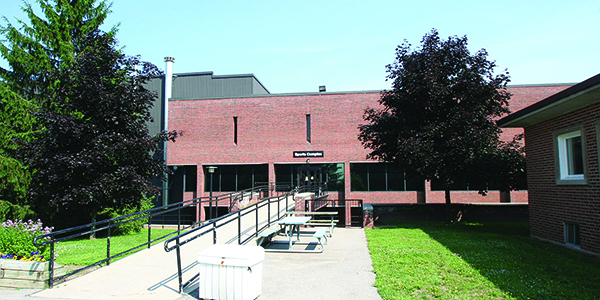
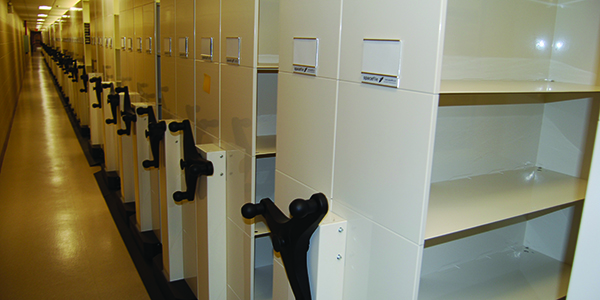
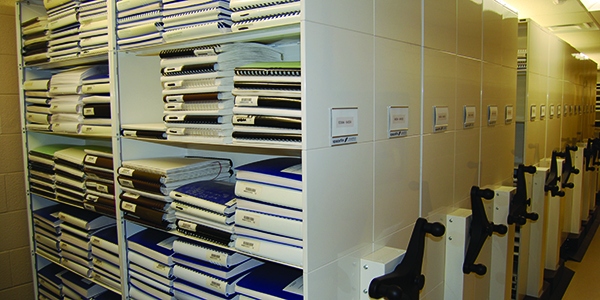
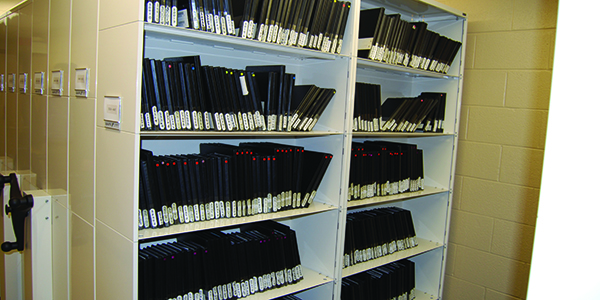
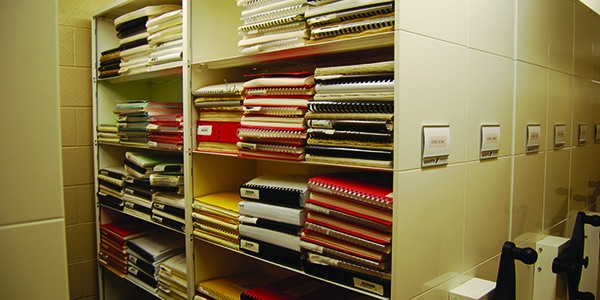
W. Ross MacDonald
Industry: Institution
The Problem
The W. Ross MacDonald library was looking for a more space efficient solution to store its Braille and large print books, tapes and digital media.
The Solution
W. Ross MacDonald management was able to combine storage from 3 rooms into 2 to gain valuable office space by utilizing Spacefile’s high-density storage systems. Spacefile designed a system to house multi-media and large format books required by the client.
UHN Toronto General-organized, efficient storage

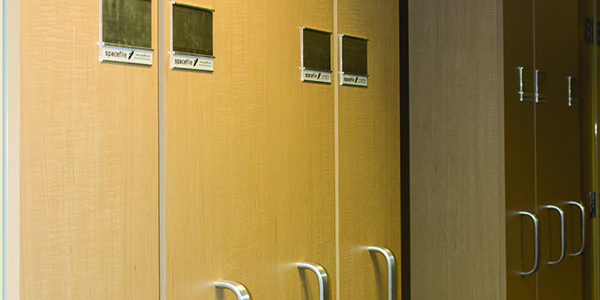
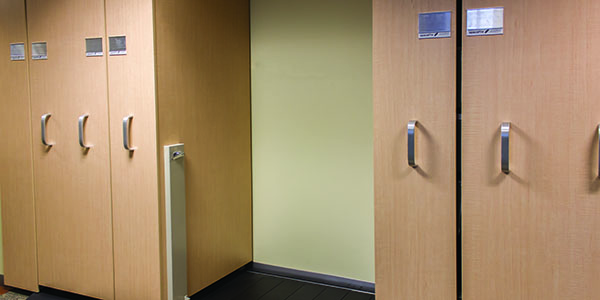
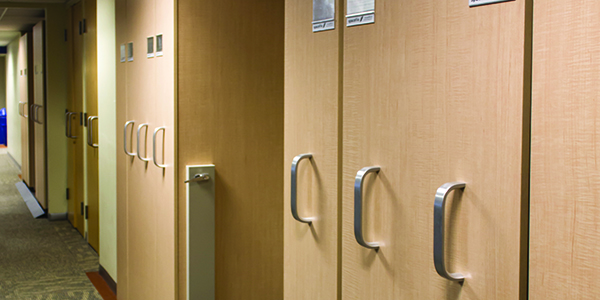
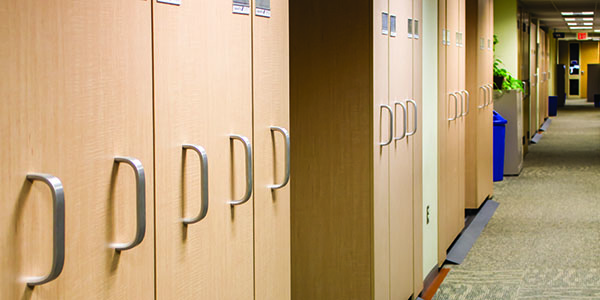
UHN Toronto General Hospital
Industry: Health Care
The Problem
University Health Network Toronto General Hospital required storage that fit into existing alcoves while increasing storage capacity. Additional storage was also required to conquer messy, inefficient filing.
The Solution
Spacefile designed multiple systems to fit into the current alcoves. The storage units utilized HIPPA compliant locking mechanisms to ensure complete security of patient files. A new look was developed for the reception area to allow for more organized, efficient storage.
UHN Princess Margaret Hospital-storage for a unique shaped space
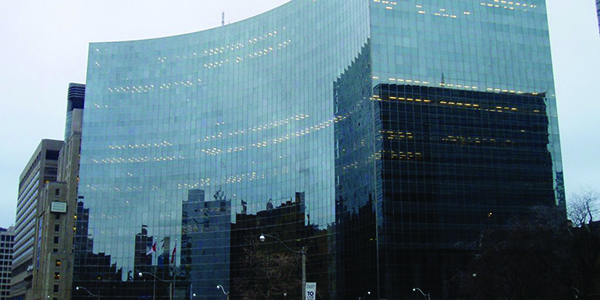
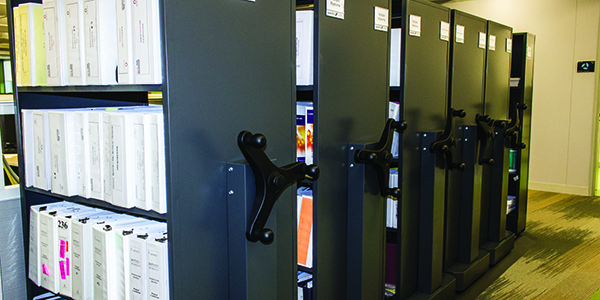
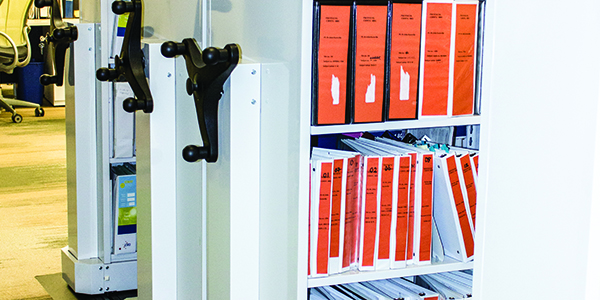
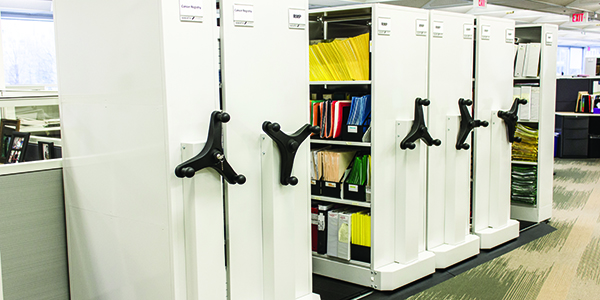
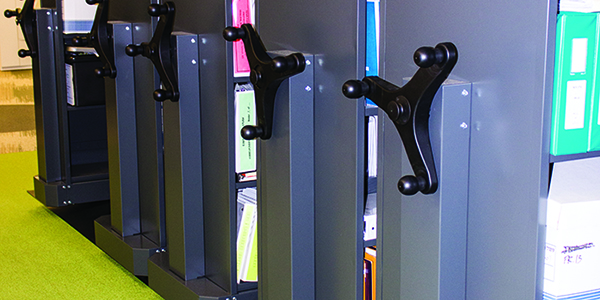
UHN Princess Margaret Hospital
Industry: Health Care
The Problem
University Health Network Princess Margaret Cancer Centre required storage for a unique shaped space.
The Solution
Spacefile designed multiple systems to fit within the round space to provide adequate high-density storage. Utilizing multiple systems allowed the storage spaces to be in close proximity to those who use them for further efficiency.
Ryerson University- maximize storage space while maintaining airflow

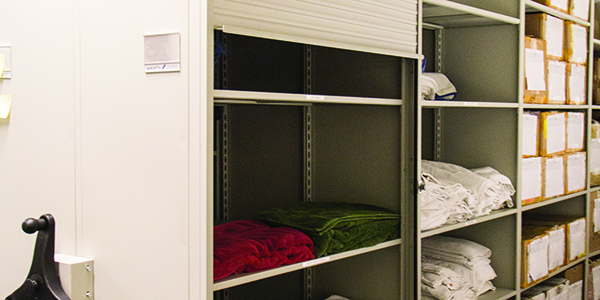
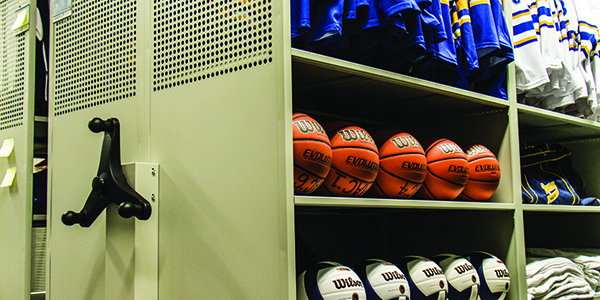
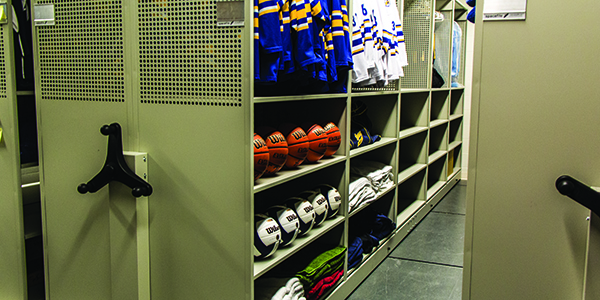
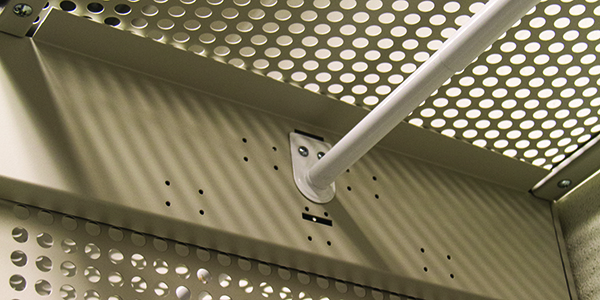
Ryerson University
Industry: Athletics
The Problem
Ryerson required a system that allowed team uniforms to air dry quickly while maximizing space for team storage and general storage.
The Solution
Spacefile developed a layout that maximized storage space while maintaining airflow. The Spacefile customized LT 4-Post system offered the perfect solution for Ryerson. Perforated end panels maintained airflow, while the adjustable nature of the system allowed the client to store unique items without the custom price.
Guelph Museum-store a large quantity of art

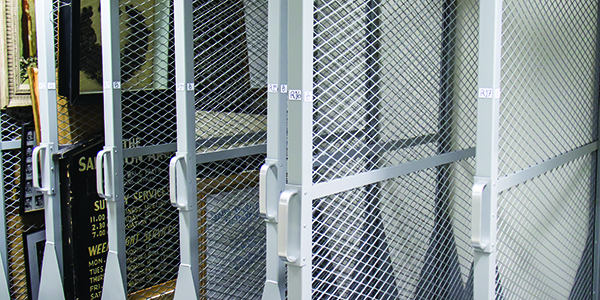
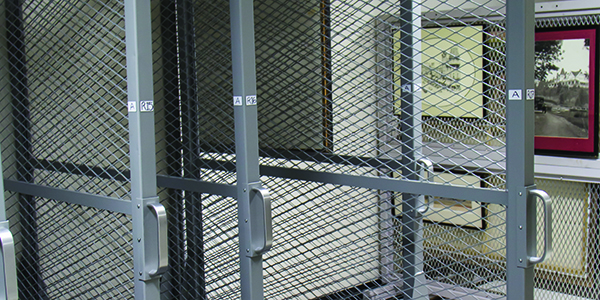
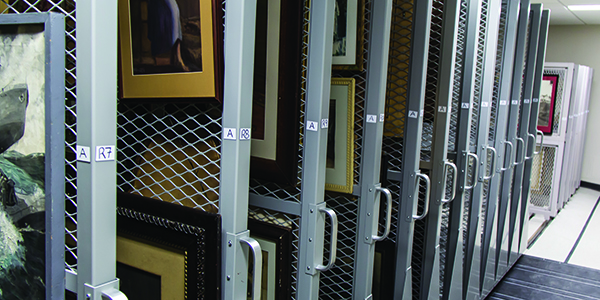
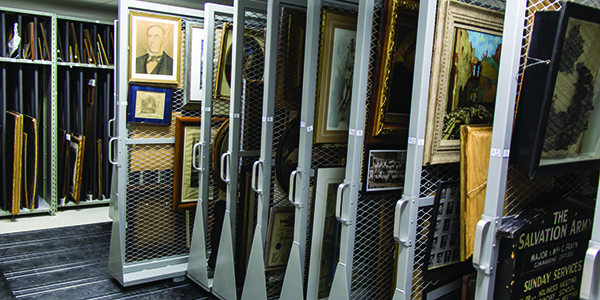
Guelph Museum
Industry: Museum
The Problem
With thousands of pieces on hand, Guelph Museum looked for an efficient way to store many works of art.
The Solution
Spacefile developed a custom solution to effectively store a large quantity of art on site. Readily accessible, each mobile carriage allowed quick access for museum curators.
Niagara Falls History Museum-quick accessibility to artifacts


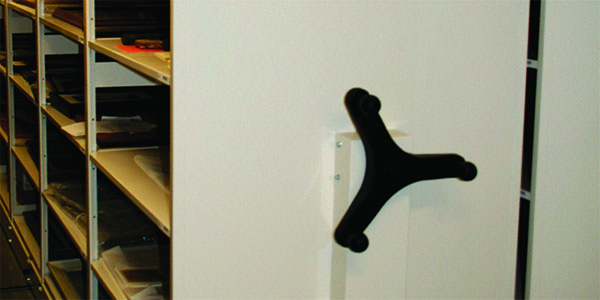


Niagara Falls History Museum
Industry: Museum
The Problem
With a multitude of artifacts to store, the Niagara Falls History Museum needed a solution for quick accessibility to all their artifacts.
The Solution
Spacefile worked alongside the architects to develop a space saving solution while maintaining easy access to all of the Niagara Falls History Museum’s Artifacts.
